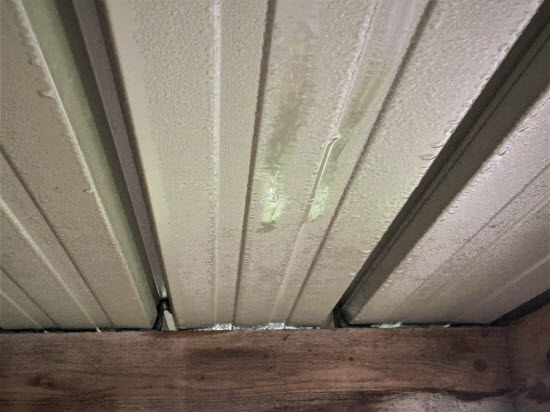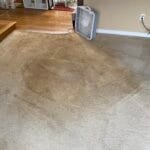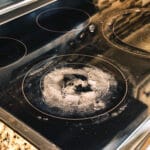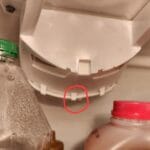Imagine waking up to find your metal shed roof dripping with condensation, leaving your stored items vulnerable to moisture damage. It’s a frustrating scenario, right?
You know the importance of keeping your belongings safe and dry, yet the battle against condensation seems relentless. But don’t worry, there’s a solution waiting for you. This article is your guide to stopping condensation in its tracks, ensuring your shed remains a secure and dry storage space.
You’ll discover effective strategies that will help you tackle the problem head-on, without breaking the bank. By the end, you’ll know exactly what steps to take to protect your shed and the valuable items within it. Keep reading to unlock the secrets to a dry, condensation-free shed roof.
Causes Of Condensation
Condensation on a metal shed roof can cause trouble. It leads to water damage, rust, and mold. Understanding the causes helps in solving the problem. Here’s a look at the main factors contributing to condensation.
Temperature Fluctuations
Temperature changes impact condensation on a metal shed roof. Warm air meets a cold surface. This causes moisture to form. Day and night temperature differences increase the risk. Warm days and cool nights make condensation worse.
Humidity Levels
Humidity is a major factor in condensation. High humidity levels lead to more moisture. Moist air inside the shed raises the chance of condensation. Poor ventilation increases humidity. This traps moisture, causing more problems.
Material Properties
The materials used in your shed also matter. Metal is a good conductor of heat. It cools down quickly at night. This makes it easier for condensation to form. Other materials may not have this issue. Insulation can help reduce this effect.

Credit: www.youtube.com
Preventive Measures
Condensation on a metal shed roof can be a persistent nuisance, leading to damage and reduced lifespan of your shed. But fear not! You can tackle this issue head-on by employing effective preventive measures. These strategies not only protect your shed but also ensure the longevity of your belongings stored inside. Let’s dive into practical solutions that you can easily implement to keep your shed dry and functional.
Insulation Options
Insulating your metal shed roof is a smart way to reduce condensation. Consider using materials like foam board or reflective foil insulation. These can create a thermal barrier, keeping the internal temperature stable and minimizing moisture accumulation.
Installing insulation is simpler than you might think. Attach foam boards directly to the underside of the roof. This will act as a shield against cold air, preventing it from interacting with warm air inside.
Reflective foil is another excellent choice. It reflects heat back into the shed and prevents warm air from touching the cold metal surface. This decreases the chances of condensation forming.
Ventilation Strategies
Proper ventilation is crucial in combating condensation. A well-ventilated shed allows moisture-laden air to escape, reducing the risk of dampness.
Think about installing roof vents or gable vents to improve airflow. These vents facilitate the natural movement of air, which can effectively diminish moisture buildup.
Additionally, consider leaving a small gap at the bottom of your shed walls. This simple trick helps air circulate and prevents condensation from settling inside.
Waterproofing Techniques
Waterproofing your shed roof adds an extra layer of protection against condensation. Use a high-quality sealant or paint designed for metal surfaces.
Apply the sealant carefully along seams and joints. This blocks water ingress and keeps your roof dry during rainy seasons.
Have you ever thought about using a waterproof membrane? It’s a practical solution that you can apply over the entire roof. This ensures that no water seeps through, helping maintain a dry interior.
Are you ready to take action and protect your shed from condensation issues? By implementing these strategies, you can make a significant difference in your shed’s condition and longevity. Which preventive measure will you try first?
Effective Roof Design
Proper insulation prevents condensation on metal shed roofs. Ventilation is key, allowing moisture to escape efficiently. Choose high-quality materials to ensure durability and reduce moisture buildup.
Designing an effective roof for your metal shed can significantly reduce condensation issues. Condensation happens when warm, moist air meets a cold surface, turning into water droplets. By focusing on smart roof design, you can minimize this problem and keep your shed dry.Slope And Drainage
A roof with a steep slope ensures water drains off quickly. This reduces the time water sits on the surface, minimizing the chances of condensation. The optimal angle allows rainwater to flow directly to the ground, keeping your shed dry. Consider adding gutters if your shed doesn’t have them. They channel water away from the base of your shed, preventing moisture build-up around the structure.Material Choice
Choosing the right roofing materials can make a big difference. Metal is a popular choice due to its durability, but pairing it with insulating layers can enhance its effectiveness. Look for materials that have anti-condensation properties or coatings. Remember the time you bought a winter coat? The one with the extra lining kept you much warmer. In the same way, an insulated roof helps keep condensation at bay.Thermal Barriers
Thermal barriers are crucial in preventing condensation. Installing a thermal barrier between the metal roof and the interior can help maintain temperature balance. This prevents warm, moist air from reaching the cold metal surface. Have you ever noticed how a double-glazed window reduces the chill compared to a single pane? Thermal barriers in your shed work similarly, keeping the internal temperature stable and reducing condensation risks. Think about the comfort of walking into your shed without worrying about slippery surfaces or water-damaged items. Isn’t it worth investing in these design tweaks? By implementing these design strategies, you can tackle condensation issues effectively. What changes will you make to your shed roof to keep it dry and functional?
Credit: www.secrets-of-shed-building.com
Maintenance Practices
Preventing condensation on metal shed roofs involves ensuring proper ventilation and insulation. Use moisture barriers to protect against dampness. Regular maintenance checks help identify early signs of condensation issues.
Maintaining a metal shed roof is essential to prevent condensation. Proper maintenance practices can extend the roof’s lifespan. They also keep your shed interior dry and damage-free. Regular upkeep is key to preventing moisture buildup. This section explores effective maintenance practices for your metal shed roof.Regular Inspections
Check your shed roof often. Look for signs of moisture or rust. Inspect during different weather conditions. Regular inspections help you spot problems early. Early detection saves you time and money.Cleaning And Care
Keep your metal roof clean. Remove debris like leaves and branches. Use a soft brush or cloth for cleaning. Avoid harsh chemicals that may damage the metal. Cleaning prevents mold and mildew. It helps maintain the roof’s appearance.Repairing Damage
Fix any damages immediately. Check for holes or cracks. Use a sealant to cover small gaps. Replace damaged panels if necessary. Repairs prevent moisture from seeping in. This ensures the roof remains strong and effective.Additional Tips
Consider installing insulation panels to minimize temperature differences. Ensure proper ventilation to allow air circulation. Regularly check for leaks or damage in the roof to prevent moisture buildup.
Condensation on a metal shed roof can be a persistent issue, leading to rust, mold, and even structural damage. Luckily, there are practical steps you can take to minimize this problem. Beyond the basics of insulation and ventilation, there are additional tips that can help you maintain a dry and healthy shed environment. Here, we’ll explore some extra strategies to keep condensation at bay.Use Of Dehumidifiers
Placing a dehumidifier inside your shed can significantly reduce moisture levels. These devices are designed to draw excess water from the air, preventing it from settling on your shed’s surfaces. If you’ve noticed your tools or equipment feeling damp, a dehumidifier could be your solution. Consider this: I once placed a small dehumidifier in my own metal shed and was amazed at the difference. After just a week, the air felt noticeably drier, and there was no more musty smell. It’s a simple investment that can save you from costly repairs later.Weather Forecast Monitoring
Keeping an eye on the weather forecast can help you anticipate and prevent condensation. On humid or rainy days, you might need to take extra precautions, such as opening windows slightly for better air circulation or using a fan. Are you someone who checks the weather app daily? Use that habit to your advantage. If heavy rain is predicted, ensure your shed is well-sealed and consider covering vulnerable items with a tarp.Professional Assistance
Sometimes, despite your best efforts, you might still face condensation issues. This is when seeking professional help can be beneficial. Experts can assess your shed and recommend tailored solutions, such as specialized coatings or advanced ventilation systems. Don’t hesitate to reach out for help if you’re feeling overwhelmed. A friend of mine struggled with severe condensation and was reluctant to call in a pro. But after doing so, the expert’s advice transformed her shed into a dry, usable space year-round. It’s okay to ask for help when DIY efforts fall short. By implementing these additional tips, you can tackle condensation more effectively. What strategies will you try next to safeguard your shed?
Credit: www.reddit.com
Frequently Asked Questions
Why Does Condensation Form On Metal Shed Roofs?
Condensation occurs when warm, moist air meets a cold surface. Metal roofs cool down quickly, causing moisture.
How Can I Reduce Humidity Inside The Shed?
Improve ventilation with vents or windows. Use a dehumidifier to remove excess moisture.
What Insulation Works Best For Metal Shed Roofs?
Foam board or fiberglass insulation is effective. It reduces temperature differences and prevents condensation.
Are Moisture Barriers Effective For Metal Roofs?
Yes, moisture barriers like vapor retarder sheets prevent moisture from reaching the roof surface.
Can Roof Pitch Affect Condensation Levels?
Yes, a steeper pitch improves drainage. It reduces water buildup, minimizing condensation risks.
Conclusion
Condensation on metal shed roofs can be frustrating. Simple steps can help. Start by ensuring proper ventilation. Keep air flowing freely. Use insulation to reduce moisture buildup. Consider a vapor barrier for added protection. Regular checks can prevent issues before they start.
Address any leaks promptly. A little effort saves you from bigger problems. Protect your shed and its contents. Remember, prevention is always better than repair. Your shed deserves the best care. Follow these tips to keep it dry and functional.
Enjoy a worry-free storage space.





